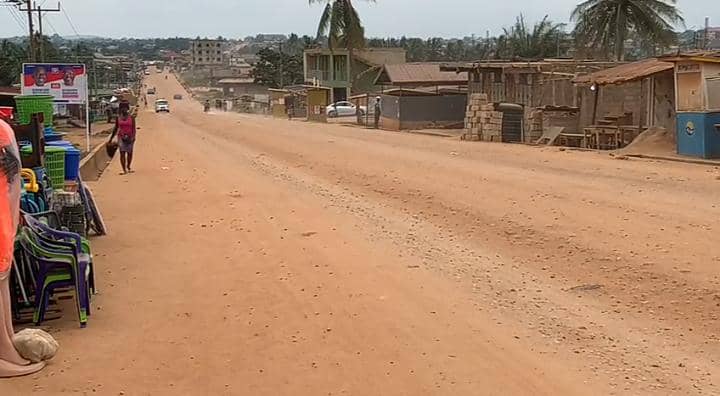In the heart of Ghana’s Central Region, Greater Kasoa stands as a symbol of rapid urban expansion. Once a quiet and secluded place, it has grown into one of Ghana’s most densely populated urban towns, fueled by its proximity to Accra and its affordable living conditions.
But behind its booming development lies an invisible danger, air pollution that is silently choking the life out of the community.
A recent community-based research study conducted by Quali-Breeze, a local advocacy group that is working for the improvement of air quality in communities, reveals that Kasoa is increasingly suffocating under the weight of uncontrolled environmental practices.
The study, which combined field observations, surveys, interviews, and health data analysis, exposes the alarming sources of air pollution in the town and their effects on public health and the environment.
Open Waste Burning: A Deadly Daily Routine
Across Kasoa, it’s not unusual to see smoke rising from waste at the roadside, backyards, or open fields. In fact, the study found that 6 in 10 households engage in open waste burning, often early in the morning or at night.
Plastics, Styrofoam, paper, packaging material, and even PVC pipes are regularly set on fire, emitting harmful pollutants into the air.
Residents cite limited waste collection, high disposal costs, and a lack of alternatives as key reasons, but the health cost is dire.
Burning plastic and synthetic material releases toxins linked to respiratory disease, which also severely degrade air quality.
Cooking with Smoke
In many homes and chop bars across Kasoa, meals are still prepared using charcoal and firewood.

The study observed that women and children often near the source are most exposed to the toxic smoke from biomass fuels, which causes persistent coughing, eye irritation, and respiratory illnesses.
Cleaner alternatives like LPG exist but are still unaffordable or inconsistent in supply for most families.
“We cook with what we have,” one food vendor said, “Gas is too expensive and sometimes not easily available.”
Dusty Roads, Dirty Lungs
Kasoa’s road network tells another story. While a few main roads have been tarred, most inner routes remain untarred and in an uneven state.
Vehicular activities kick up clouds of dust that linger in the air and settle on everything from windows and altering the original building colour.
This can become a serious health risk as dust can easily be inhaled, entering the bloodstream, and triggering respiratory problems.

Vehicular Emissions: Old Engines, Toxic fumes
Kasoa streets are packed with tricycles, motorbikes, taxis, and secondhand vehicles, many over 15 years old with outdated engines. These emit high levels of carbon monoxide and hydrocarbons, creating a haze that hangs over busy roads, especially during rush hours.
According to the study, motorcycles and tricycles, the popular transport modes, emit significantly more pollutants than larger vehicles.
“You can smell it in the air,” said one resident. “Every morning, the fumes hit your face like smoke from a burning tire.”
Livestock Rearing and Open Drainage Add to the Problem
Less discussed but equally important, the rearing of livestock in residential areas and clogged open gutters contribute significantly to poor air quality.
Stagnant waste, decomposing matter, and animal droppings release foul odor, making everyday life uncomfortable and unhealthy.
Health Impacts Already Visible
Interviews with health workers in Kasoa show a rise in complaints of persistent coughing, sneezing, running nose, and eye irritation, especially among children and the elderly.
Pregnant women, in particular, are at high risk from exposure to fine particles.
The study also highlighted a worrying lack of public awareness. Few residents understand what air quality monitoring is and the consequences of engaging in waste burning.
In a community of over 300,000, there is only one operational air quality monitor, limiting the ability to respond quickly and accurately to rising pollution levels.
What Must Be Done
To address the growing crisis, we recommend the following:
- Launching public health campaigns to raise awareness about air pollution.
- Establish community-based waste aggregation and recycling systems.
- Subsidize clean cooking fuels like LPG for low-income households.
- Pave and maintain inner roads to reduce dust emissions.
- Enforce existing environmental regulations and monitor vehicle emissions.
- Install more air quality monitors at strategic points across the town.
A Wake-Up Call for Ghana
Kasoa’s situation mirrors a larger problem in Ghana, where development is outpacing environmental planning. But it also presents an opportunity.
With strategic investments, sound policies, and community engagement, Greater Kasoa could become a model for urban sustainability in West Africa.
Until then, the air we breathe remains a quiet killer, polluting the very space we call home.
To access the full research report or partner on our School Air Monitor Project, contact us via:
- Tel: 233-59-113-7333
- Email:qualibreeze@gmail.com
The views and opinions expressed in this article are those of the author and do not necessarily reflect the views of The Labari Journal. This content represents the author’s perspective and analysis.





